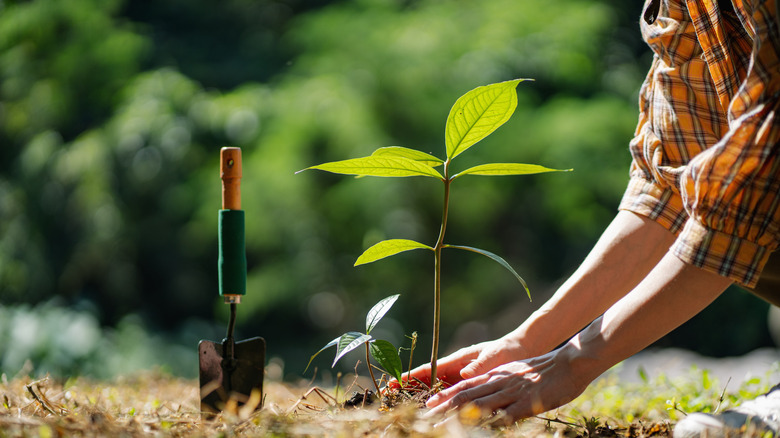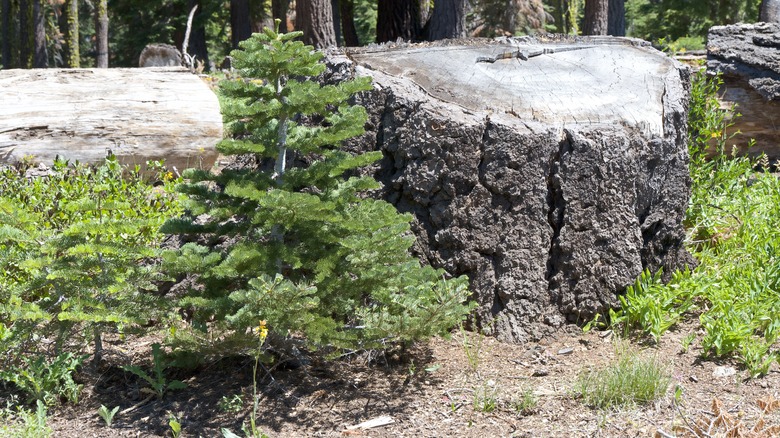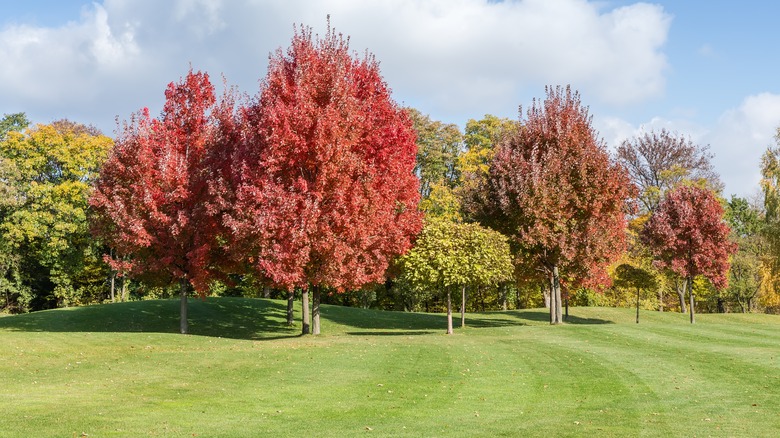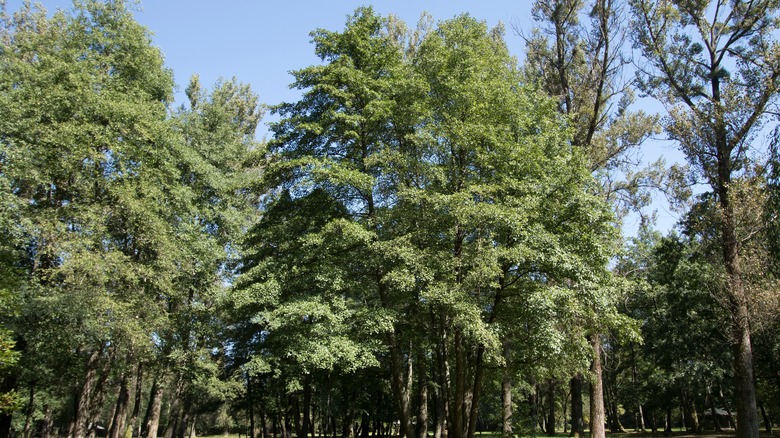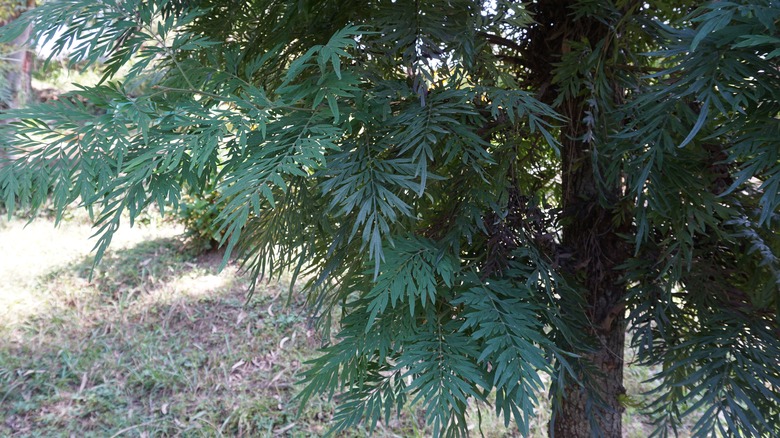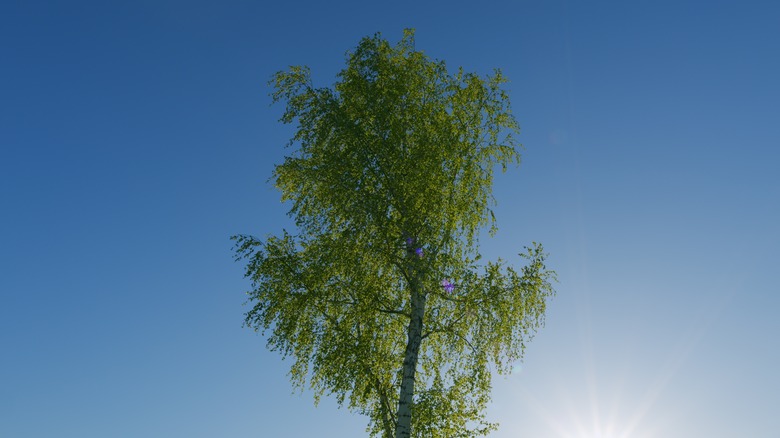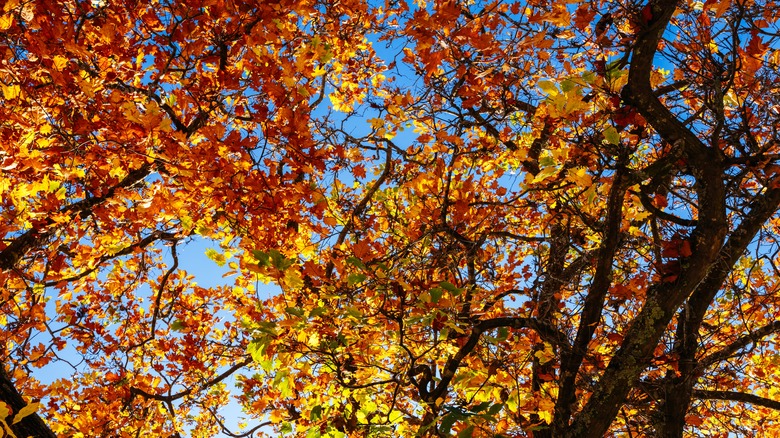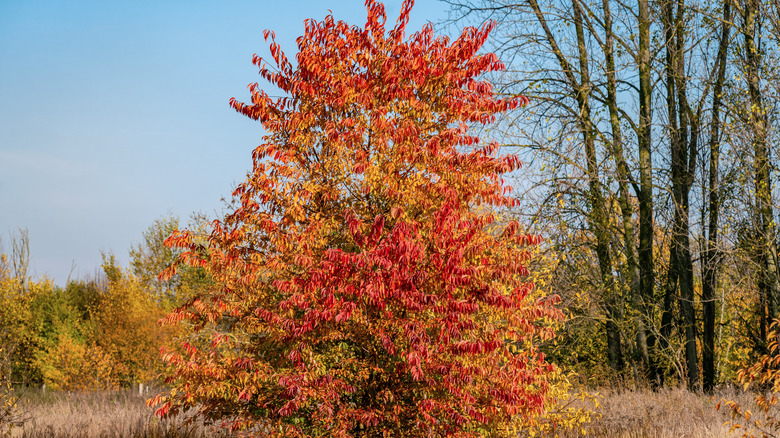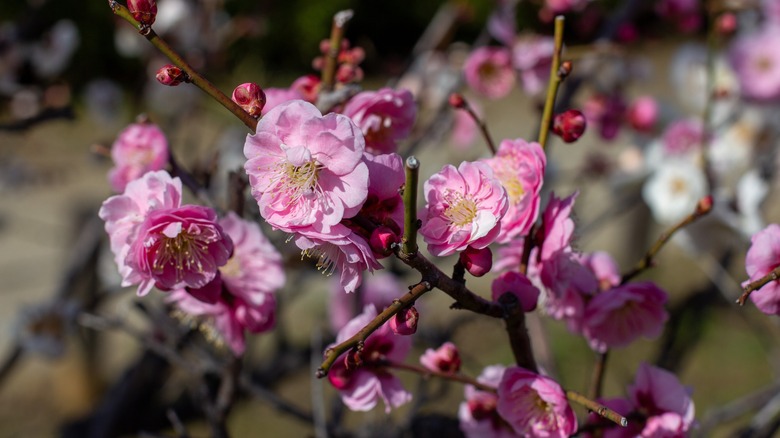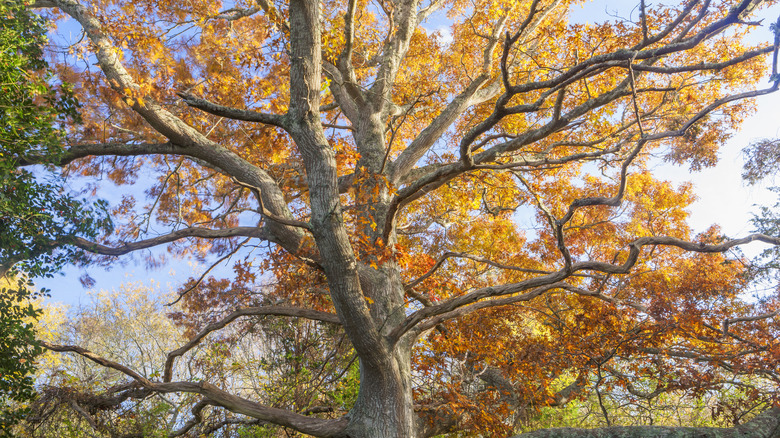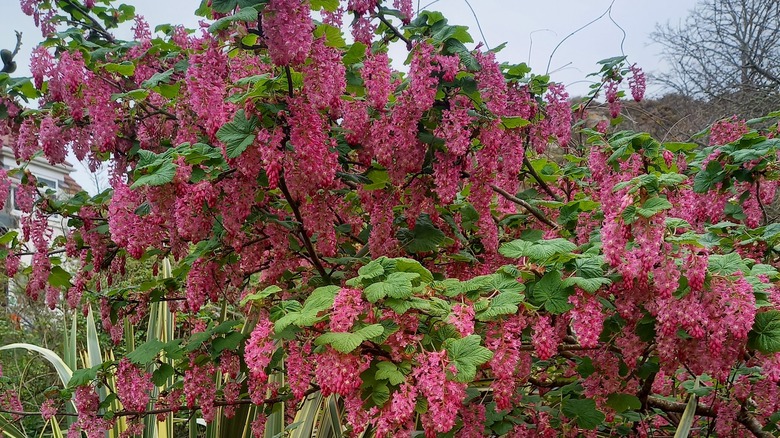10 Fast-Growing Trees You Can Grow From Seeds (& Which Are Best For Beginners)
We may receive a commission on purchases made from links.
If you're looking for a way to increase shade or are thinking about which plants to consider for adding privacy to your property, there's no better way than planting a few trees. Not only do they give you a little buffer from nosy neighbors, but the ecological benefits are massive. Expect to get some more temperate summer days in your yard, less-polluted air, and you might even see an uptick in your physical and mental health, all thanks to your new green buds.
But getting that "Secret Garden" level of privacy takes a while, maybe even decades. What about those of us who need something a little more akin to instant gratification? Don't worry; we've got your back. We've found 10 trees you can start from a seed that will get a gold star on their growth charts every year for how quickly they reach new heights, literally. We'll include a few tips to ensure your tree thrives once planted, plus let you know which of these fastest-growing trees can handle a little bit of that newbie "not quite a green thumb, but getting there" care.
The grand fir (Abies grandis) grows fast and is beginner-friendly once established
If you want rapid results give the ever-so-regally named grand fir (Abies grandis) a try. These fast-growing beauties are native to the Pacific Northwest and can grow so high they're considered among the tallest firs in the world, with some increasing in height by almost 3 feet per year. They're often used as Christmas trees, so expect to get a big whiff of nostalgia near your grand fir trees.
Grand firs are hardy trees that have no serious insect or pest issues. These are big trees that can reach up to 250 feet in good conditions, so make sure you have enough room. However, there's now a smaller Abies grandis 'Compacta' cultivar, which may be available in some specialty nurseries.
Grand firs are beginner-friendly once they've settled in, but germination rates from seeds are low, which are prone to infestations. You will have better chances of germinating grand fir seeds if you stratify them; the USDA recommends anywhere from 14 to 42 days at a temperature no higher than 41 degrees Fahrenheit. You might also be able to speed up germination by using this sandpaper hack. Use mineral-rich soil designed for seed starting and watch for any fungal growth, the biggest cause of seedling failures during the first year. Keep the soil moist, but not waterlogged, and keep seedlings out of direct light. If germination is sparse, don't beat yourself up. In the wild, only around 50% of grand fir seeds germinate, so it's not easy, even for Mother Nature. If you're a true beginner, you might want to plant a sapling instead which will be more tolerant and hardy than its tiny seed siblings.
The Red maple (Acer rubrum) is easygoing and great for beginners
Native to most of the eastern part of the U.S., the red maple (Acer rubrum) is considered a very easygoing tree that's tolerant of most soil conditions. When its seeds find a happy place to live, researchers have seen red maple sprouts reach anywhere from 1 to 3 feet in their first year and grow another 2 feet annually for the next few years. Plus, its fall display of fire-red leaves makes it one of the best maple trees for a little bit of drama right in your own backyard.
While fairly unfussy, red maples will be happiest in moist soil that's slightly acidic. To give you an idea of just how moist, one of its other names is "swamp maple" so there you go. Red maples are an easy tree to grow from seed as they're typically ready germinators. Soaking them in hot water is a simple way to scarify the seeds, after which you can place them in trays or pots outside in the cold. Use soil high in organic matter or designed for seed starting and keep it moist. Red maple seeds can germinate fast (the seeds are ready to grow as soon as the fruit is finished ripening). If you're planting them once the weather has warmed up, cold-stratify the seeds in the fridge for six weeks to three months before planting.
When planted out, Acer rubrum needs full sun to reach its highest peaks which top out around 75 feet. Be very mindful of where you plant the young trees because red maples can produce surface roots that may upend concrete pavers or become a tripping hazard.
Black alder (Alnus glutinosa) trees are beginner-friendly and will grow in poor soil
The Black alder (Alnus glutinosa) tree is known for its brown-black bark that can give your property a sort of dark, enchanted forest look. It's widespread around the Great Lakes in the U.S. and Canada and is known for having a slightly sticky feel to its growing stems and buds, caused by glands that produce a glutinous residue (hence the "glutinosa"). Its biggest growth spurts happen when the tree is young, with researchers recording annual growth rates of just under 5 feet between the fourth and tenth year of its life. In ideal conditions, trees can reach heights of up to 65 feet.
Black alder trees aren't picky when it comes to soil conditions but do best when soil is consistently moist. They love wetlands, and can become invasive in these areas, so it's wise to check with your local NRCS or University Extension office before planting. Alders are known "nitrogen fixers" and can supply nitrogen to nutrient-light soil by entering into a symbiotic relationship with Frankia alni, a nitrogen-producing bacteria. Black alder trees are relatively easy to grow from seeds and quick to germinate.
Look for seeds harvested in September or October, with the earlier fallen ones having potentially better viability. However, don't pick seeds before the cones have turned brown. Plant seeds no deeper than 0.2 inches below the surface using acidic soil with a pH around 4 and keep the humidity high to promote germination. Consider using a domed seed starter like the BlumWay self-watering seed starter kit to trap moisture. If everything goes right, you should see sprouts within as little as two weeks.
Silky oak (Grevillea robusta) trees can reach 65 feet in 20 years
The silky oak (Grevillea robusta) hails from Australia and is a fast-growing tree in warm climates. It can handle some cooler temperatures, but you'll only get to see the beautiful yellow-orange flowers in tropical regions. Researchers found that silky oak trees planted with a 10-by-10-foot spacing were able to reach 25 to 30 feet within five years. After 20 years, the trees reached an impressive 65 feet. In the wild, this tree can grow to 165 feet. That's a whole lot of silky oak!
Silky oaks are prolific self-seeders, so be cautious where you plant this tree, especially in warm climates where they can become invasive. Do not plant in Hawaii, and check with your local University Extension office if planning to plant in California or Florida. The branches can snap in high winds, so avoid planting close to your house or other structures. This isn't a tree we'd consider to be lazy-gardener-friendly as it tends to shed lots of leaves during the spring before its next growth spurt. That said, if you're up for the maintenance, you could be rewarded with a tall specimen pretty quickly.
Germinating a silky oak tree from seeds is relatively easy, and seeds can be stored for up to two years and still be viable (with 10% humidity). Grow the seeds in flats or pots and monitor them; germination should happen after about a month. You can also cold-stratify for a month, or soak the seeds for 48 hours to speed up germination. Some gardeners keep seedlings in pots until the saplings are strong enough to compete with neighboring plants and trees, usually when they're around eight inches tall or between 12 and 14 weeks old.
Sweet birch (Betula lenta) trees grow fastest when they're young
The sweet birch (Betula lenta), also known as the black birch or cherry birch, is treasured in its native eastern U.S. habitats for fall displays of bright golden leaves. The "sweet" part of the name stems from the scent of the bark, which is described as wintergreen or minty. Birches are known as "pioneer" plants and grow quickly when young, establishing dominance for nutrients before other saplings can take hold. It can outpace hemlock, beech, and some maples by double the rate, reaching up to 80 feet high in the best conditions.
Sweet birch trees love moist, well-draining soil, but they can handle a missed watering or two if necessary. Growing sweet birch from seeds starts during the fall. Cover the seeds with a thin layer of soil that stays consistently moist and keep out of direct sunlight. It should take around four to six weeks for seedlings to become visible. Germination rates for sweet birch are low, so it's a good idea to sow extra seeds. Once you're ready to plant your birch saplings, look for an area with north-facing slopes and slightly acidic soil. Consider putting a light tarp up to protect them from direct sun until the young trees get settled, usually after two to three months.
Sassafrass (Sassafras albidum) trees can reach up to 12 feet in only three years
Not only is sassafrass (Sassafras albidum) one of the funnest tree names to say, this species is also full of unique characteristics that make it a strong candidate for your backyard. Native to the eastern U.S., sassafrass trees have a spicy, cinnamon aroma to their bark (which was used in the first root beer recipes) — some say this unusual shade tree smells like Fruit Loops – and produce leaves that look like mittens, giving it the other name of the "mitten tree." If planted in a spot with low competition, your sassafrass tree could reach up to 12 feet in only three years, potentially topping out around 60 feet once fully matured. If that sounds like too much tree, don't worry, because sassafrass takes pruning well and many people keep it short and shrubby.
While sassafrass hasn't been used in root beer for decades, it's still a staple of Creole cooking; filé powder comes from ground sassafrass leaves so you may find a tree in your favorite foodie's backyard. Ask them for seeds to plant in spring. You may want to stratify the seeds for four months in a tray filled with moist sand which stays in a spot that gets no warmer than 41 degrees Fahrenheit. Plant seeds in a seed-starting mix that's loamy and place somewhere well-lit; sassafrass was meant for the spotlight and hates shade. When planting out, allow your sapling a nice wide berth from other plants; sassafrass trees may have allelopathic properties that can impact neighboring plants and trees and it will compete with them for nutrients. Sassafrass will handle most soil conditions okay but really does best in sandy soil that's slightly acidic.
Black cherry (Prunus serotina) trees grow fast after germination and are beginner-friendly
The black cherry (Prunus serotina) is a hard worker for its neighbors. It's excellent for adding shade and is popular in pollinator gardens since butterflies and birds can't get enough of this tree. Plus, there's just something about the aroma of cherry bark that's heavenly. The black cherry is a fast grower, with some specimens reaching 3 feet within their first year. After that, if you keep it happy and fertilized, you can expect your cherry tree to tack on another 4 to 6 feet annually, potentially maxing out at 80 feet high, should you let it.
Growing black cherry from seed is simpler than with a lot of other trees, as they're pretty easygoing as long as you get a viable seed stash, in which case germination rates can be sky-high. There's no need for complicated scarification processes, but black cherry seeds do prefer humusy soil over mineral-rich and may enjoy some leaf mulch added in. They need consistent moisture and do best when buried deep to ensure the seeds stay moist. If you plant seeds in the fall, they'll receive natural cold stratification over the winter. Keep them out of direct light until you start to see sprouts, typically after a month or so. From there, you may get some fast growth, so be ready to plant your new tree soon. If you decide to harvest the cherries, just note that they're pretty bitter and potentially toxic due to their cyanogenic compounds. Still, black cherries are used in jams and for flavoring alcohol so it's possible to eat them, just understand it could be risky in large quantities.
Japanese apricot (Prunus mume) can grow up to 5 feet per year
Despite its name, the Japanese apricot (Prunus mume) is more revered in Chinese culture and is where plum sauce comes from ("plum" is a misnomer). Prunus mume is more than a pretty face; it's a tough ornamental that's resistant to pests, fast-growing, and highly adaptable. In the ground, it can grow around 5 feet per year and easily reaches up to 30 feet when mature. On the other hand, it has no problem staying inside and chilling on your side table as part of a bonsai display, which is especially useful if you want to keep this somewhere with winters too cold for its winter-blossoming flowers to handle (usually USDA Zone 6 and below).
Japanese apricot used to be hard to come by in the US, but that has changed recently. While available at some nurseries, you can also try your hand at growing Japanese apricot from seeds (we found some for sale from Sheffield's Seed). Mume seeds do best when stratified for around three months, so plan to keep them somewhere that stays pretty cold for this process, like your fridge. Put the seeds in a plastic bag with either a moist paper towel or a mixture of half sphagnum moss and half sand. Keep out of direct light (the occasional fridge light is fine) and monitor for sprouts. After three months you can either plant them in the ground or in a pot. Japanese apricot trees thrive when they're in a soil blend that's a little bit acidic but has good, loamy texture. Keep your baby tree out of harsh direct sun so that its soil never dries out; Prunus mume needs consistent moisture to be happy.
Scarlet oak (Quercus coccinea) trees live nearly forever and are beginner-friendly
The scarlet oak (Quercus coccinea) is another native showstopper, named for its deep red foliage display every fall. The scarlet oak will become a generational family member, living up to 180 years. While it's not as fast as others on this list, it still grows at a good pace of up to 2 feet per year. Once settled into place, though, it's there for the long haul and can reach up to 80 feet high and 60 feet wide, becoming home to multiple butterfly species and songbirds. Plus, if you're feeling up for a culinary adventure, try roasting and grinding its acorns; some people swear by it as a coffee substitute.
You'll most likely need to buy seeds rather than sourcing them from a friend because it takes at least 20 years before an oak will bear seeds and 50 years before seed production is in full swing. Be mindful of where you're planting your oak, as its large size and root system require ample space. Oak trees can be notoriously tricky to transplant, thanks to their taproot, sparse number of lateral roots, and slow root regeneration rates. But there's an easy way to get around this: Simply plant your acorns directly in the ground. It doesn't get more beginner-friendly than that
Inspect your scarlet acorns well to ensure there's no insect damage that will prevent viability, then bury them during the autumn in a place that has some leaf litter; scarlet oak acorns seem to do better with a dressing of leafy mulch. If it doesn't rain, keep your planted seeds watered. Once the sprouted trees start to grow, watch for butt rot and prune off dead stems or leaves regularly.
Blood currant (Ribes sanguineum) trees can grow nearly 2 feet per year
If you want something that's not quite as overwhelming, but can still provide a good privacy wall quickly, give the blood currant (Ribes sanguineum) a try. It's a fast-growing shrubby tree, adding up to 2 feet of growth per year until it maxes out around 12 feet tall and wide. In the beginning of spring, it will put out masses of gorgeous flowers that range from blood-red to a soft pink and give off the most lovely, spicy smell when crushed. The currant berries are edible but seem to have forgotten they're supposed to have a taste; their flavor has been described as "insipid". But Martha Stewart and hummingbirds are big fans of the blood currant, as you will be, too, because it's pretty easy to grow once you get it established.
Blood currant seeds need a long stratification period, usually between three to five and a half months with temperatures between 32 and 36 degrees Fahrenheit. Once they're ready to be planted, use a mixture that's full of organic material (like peat moss) and nutrient-rich. Cover the seeds lightly and keep them moist. After about 12 days, your seeds will germinate and are ready to be planted into individual containers within another two weeks. From here, grow them into young saplings in an area that's protected from harsh sun and wind. Once ready to plant into the ground, put your young blood currants in a spot with well-draining soil that receives full sun to get those bright flowering blooms. Don't put it somewhere too close to a water feature; Ribes sanguineum is not a fan of humidity and too much moisture can trigger fungal issues.
